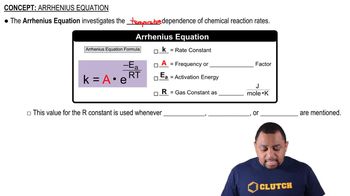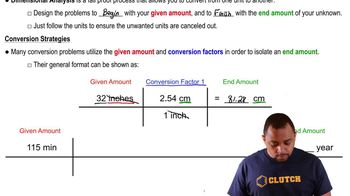Here are the essential concepts you must grasp in order to answer the question correctly.
Arrhenius Equation
The Arrhenius equation relates the rate constant of a reaction to temperature and activation energy (Ea). It is expressed as k = A * e^(-Ea/RT), where k is the rate constant, A is the pre-exponential factor, R is the universal gas constant, and T is the temperature in Kelvin. Understanding this equation is crucial for analyzing how temperature affects reaction rates and for calculating Ea from experimental data.
Recommended video:
Activation Energy (Ea)
Activation energy is the minimum energy required for a chemical reaction to occur. It represents the energy barrier that reactants must overcome to form products. A higher Ea indicates that a reaction is slower at a given temperature, while a lower Ea suggests a faster reaction. Calculating Ea from temperature-dependent rate constants helps in understanding the kinetics of the reaction.
Recommended video:
Graphical Analysis of Kinetics
Graphical analysis in chemical kinetics often involves plotting data to determine relationships between variables. In this case, a plot of ln(k) versus 1/T (in Kelvin) can be used to derive Ea from the slope of the resulting line, according to the linear form of the Arrhenius equation. This method allows for a visual interpretation of how the rate constant changes with temperature, facilitating the calculation of activation energy.
Recommended video:




